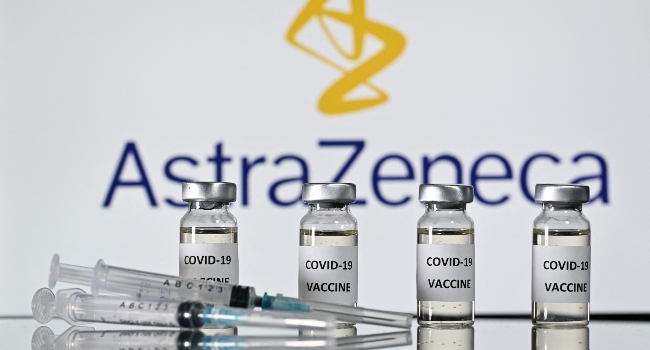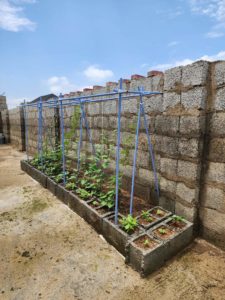How AstraZeneca’s Errors Eroded US Confidence In Its COVID Shot

![]()
Fred TANNEAU / AFP
The United States was among the biggest backers of the AstraZeneca Covid vaccine, but a series of blunders by the company eroded American authorities’ confidence and have delayed rollout in the world’s hardest-hit country.
The British-Swedish drugmaker was on the back foot Tuesday, vowing to release more data “within 48 hours” after the US National Institute of Allergy and Infectious Diseases (NIAID) raised concerns that results reported from its US trial were outdated.
The Washington Post meanwhile reported that independent experts tasked with overseeing the trial had earlier written a letter to AstraZeneca telling them they should report their efficacy as 69 to 75 percent, not 79 percent as the company had done when it omitted the most recent data.
“It’s hard to understand what rationale could justify reporting stronger numbers when weaker and more up to date numbers were actually available,” Holly Fernandez Lynch, an assistant professor of medical ethics at University of Pennsylvania told AFP, though she added that she was heartened by the government’s quick response.
– One-time favorite –
AstraZeneca’s issues with US health agencies stem not from potential safety issues surrounding blood clotting, which led to pauses in Europe, but from its alleged lack of transparency.

The relationship began much more positively.
Think back to last May, when then-president Donald Trump launched “Operation Warp Speed” to decide which vaccine makers to fund and order from, well before there was any inkling of results.
The AstraZeneca vaccine, developed with Oxford University, was a leading contender because of the research team’s past work on a MERS vaccine, and the fact it was based on adenovirus vector technology — considered more “tried and true” than untested mRNA vaccines.
READ ALSO: Croatia PM Receives AstraZeneca Jab To Dismiss Fears
The US ordered 300 million doses, far more than its initial orders for Moderna and Pfizer (100 million each), and gave the company $1.2 billion.
– Trial pause –
The first sign of trouble came back in September when AstraZeneca paused its global trials after a British participant developed neurological symptoms.
Such pauses aren’t unusual — Johnson & Johnson also had to temporarily halt its trials — but according to reports, the US Food and Drug Administration only learned of the problem via the media.

While Britain quickly resumed its trial, the US waited about seven weeks to restart while it carried out its own investigation.
– Trust issues –
In November, AstraZeneca became the third company to announce promising early results — declaring its vaccine efficacy ranged from 62 percent to 90 percent, depending on dosing, and the average was 70 percent.
Scientists were left puzzling over the discrepancies, because a lower first dose seemed to work better.
AstraZeneca had also pooled results from differently designed trials in Britain and Brazil, which is considered irregular.
It later emerged that the different dosing regimes had occurred by accident, not design — something the company omitted to mention.
And it was left to Moncef Slaoui, then chief advisor to Warp Speed, to reveal in a call to US reporters that the group that achieved 90 percent efficacy did not include anyone aged over 55.
– Latest ‘unforced error’ –
On Monday, AstraZeneca released its latest results from a trial carried in the US, Peru, and Chile, reporting a better than expected efficacy.
Then came the NIAID statement, undercutting the good news.
Saad Omer, director of the Yale Institute for Global Health, told AFP the episode spoke to the overall problem of vaccine makers releasing their results via barebones press releases during the pandemic.
“Issue a slide set with the press release that gives you more insight into the basic data,” he added, calling on the industry to adopt a new standard of transparency or risk losing public confidence.
Both Omer and Fernandez Lynch stressed that the controversy should not detract from the fact that the vaccine was performing well in countries where it was authorized, and its benefits outweigh safety risks.
“In my mind, it’s an unforced error by the company,” Anthony Fauci, who heads up NIAID, said to medical news site Stat.
– Does the US need AstraZeneca? –
The US has authorized three vaccines — Pfizer, Moderna, and Johnson & Johnson — and between them they should be able to ship enough doses to cover more than the US adult population by the end of May.
AstraZeneca said it expected to apply for authorization “in the coming weeks” and a stamp of approval by the FDA — the gold standard regulator — would go far in assuaging global doubts over the vaccine.
Fernandez Lynch said the controversy would “be a big topic of conversation at any FDA advisory committee discussion” when AstraZeneca seeks emergency approval.
Many observers argue the US should consider shipping its millions of doses AstraZeneca to low-income countries that are facing serious shortages.
AFP


